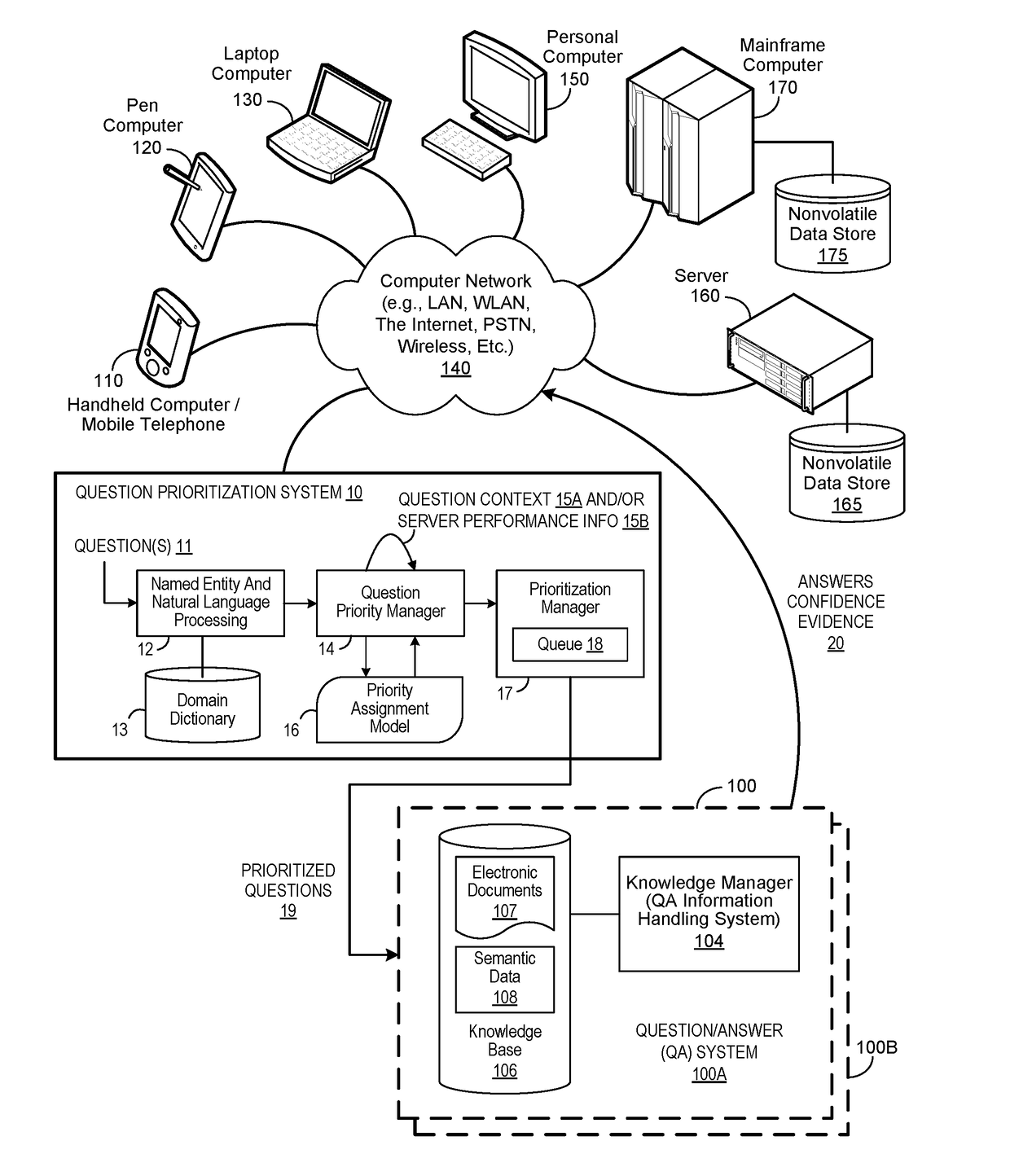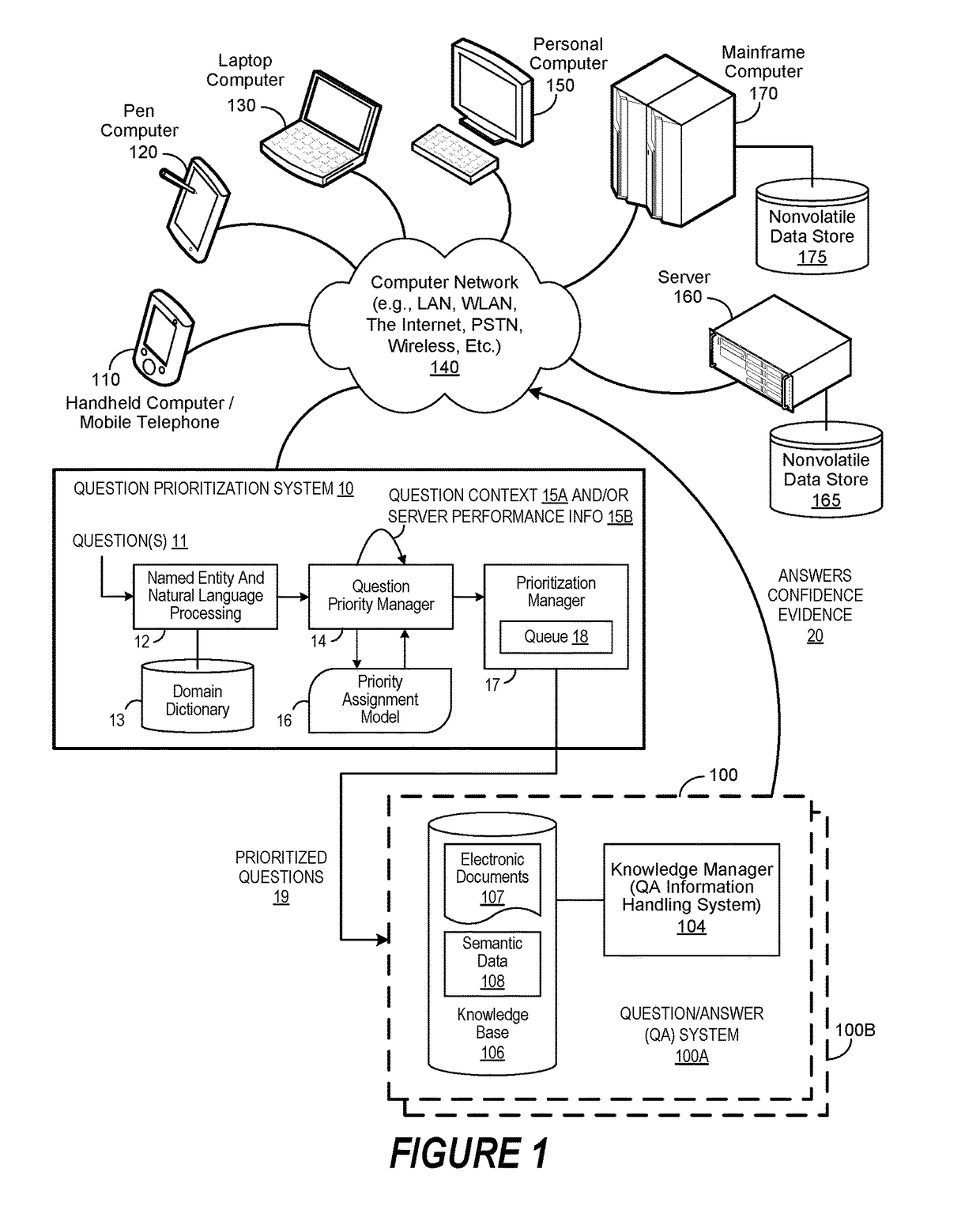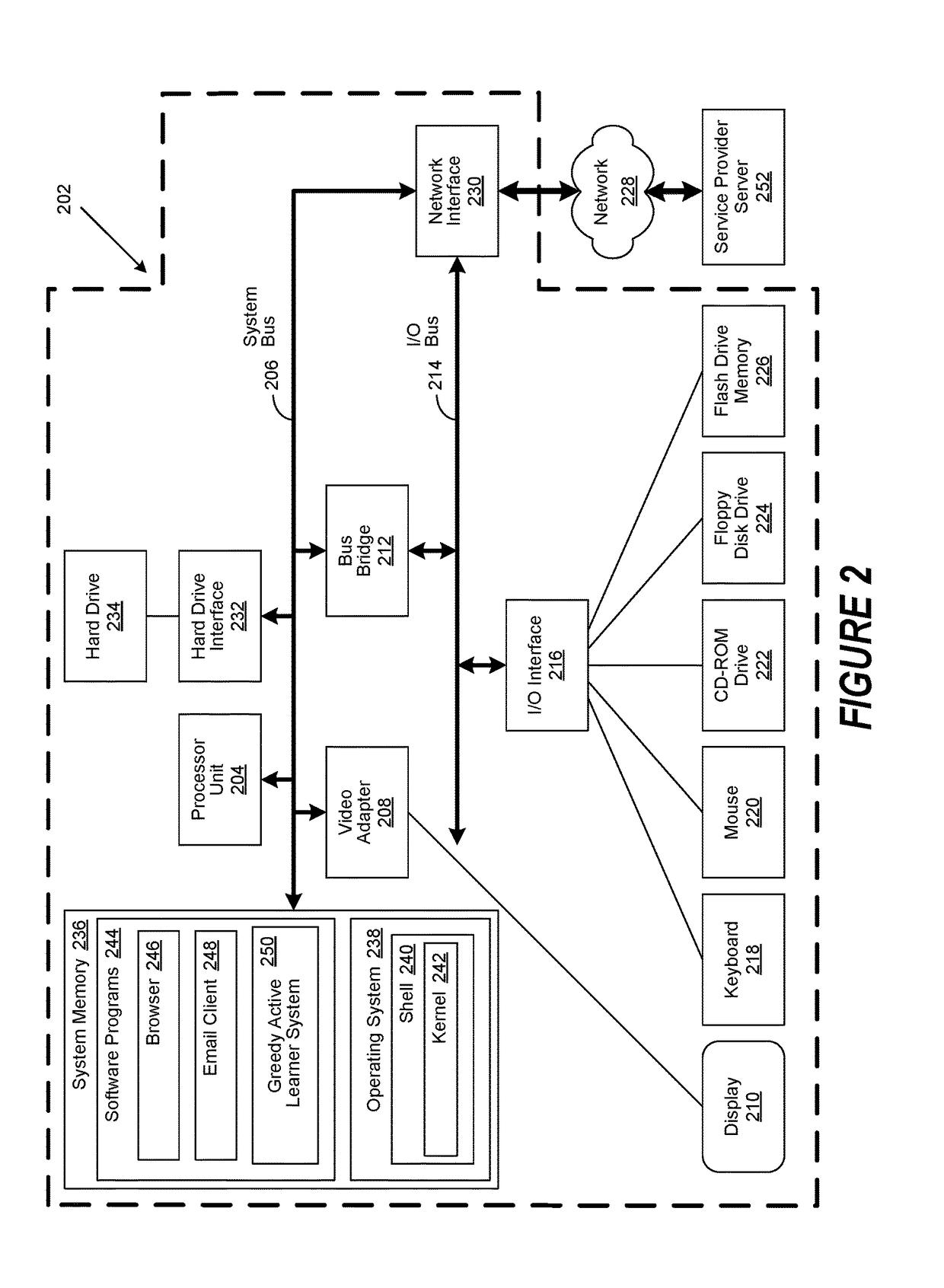Greedy Active Learning for Reducing Labeled Data Imbalances
a labeled data and active learning technology, applied in the computer field, can solve the problems of unsupervised learning approaches that do not use training data, algorithm overload, time-consuming and laborious, etc., and achieve the effect of reducing labeled data imbalances
- Summary
- Abstract
- Description
- Claims
- Application Information
AI Technical Summary
Benefits of technology
Problems solved by technology
Method used
Image
Examples
Embodiment Construction
[0017]A method, system and computer-usable medium are disclosed for reducing labeled data imbalances when training an active learning system for a Natural Language Processing (NLP) task. The present invention may be a system, a method, and / or a computer program product. In addition, selected aspects of the present invention may take the form of an entirely hardware embodiment, an entirely software embodiment (including firmware, resident software, micro-code, etc.) or an embodiment combining software and / or hardware aspects that may all generally be referred to herein as a “circuit,”“module” or “system.” Furthermore, aspects of the present invention may take the form of computer program product embodied in a computer readable storage medium (or media) having computer readable program instructions thereon for causing a processor to carry out aspects of the present invention.
[0018]The computer readable storage medium can be a tangible device that can retain and store instructions for ...
PUM
 Login to View More
Login to View More Abstract
Description
Claims
Application Information
 Login to View More
Login to View More - R&D
- Intellectual Property
- Life Sciences
- Materials
- Tech Scout
- Unparalleled Data Quality
- Higher Quality Content
- 60% Fewer Hallucinations
Browse by: Latest US Patents, China's latest patents, Technical Efficacy Thesaurus, Application Domain, Technology Topic, Popular Technical Reports.
© 2025 PatSnap. All rights reserved.Legal|Privacy policy|Modern Slavery Act Transparency Statement|Sitemap|About US| Contact US: help@patsnap.com



